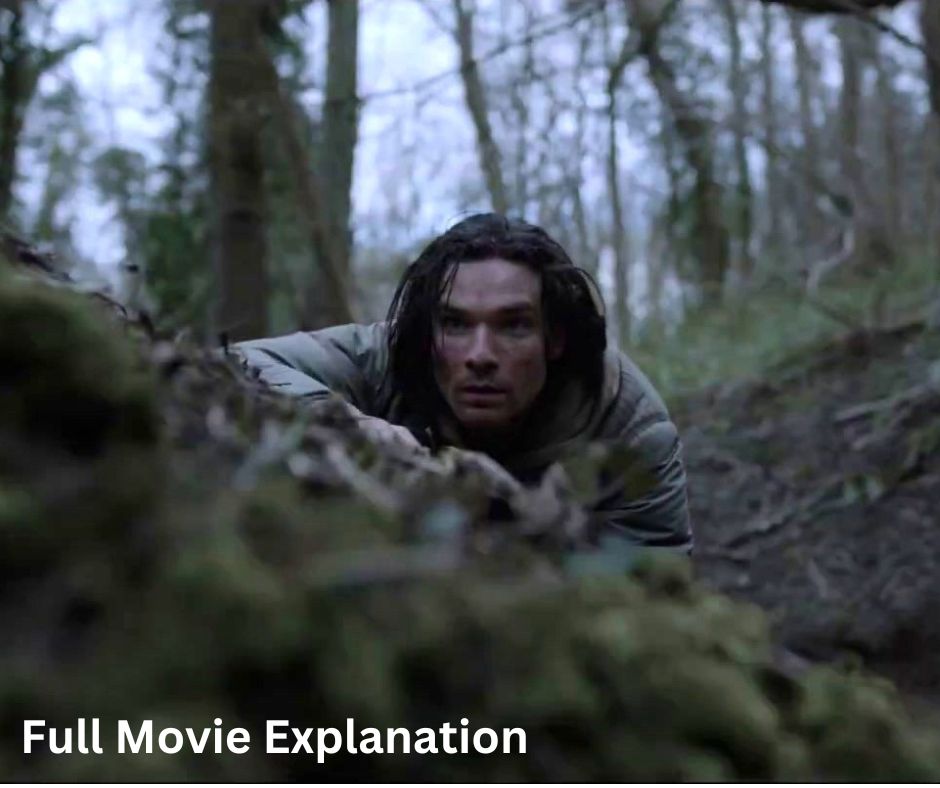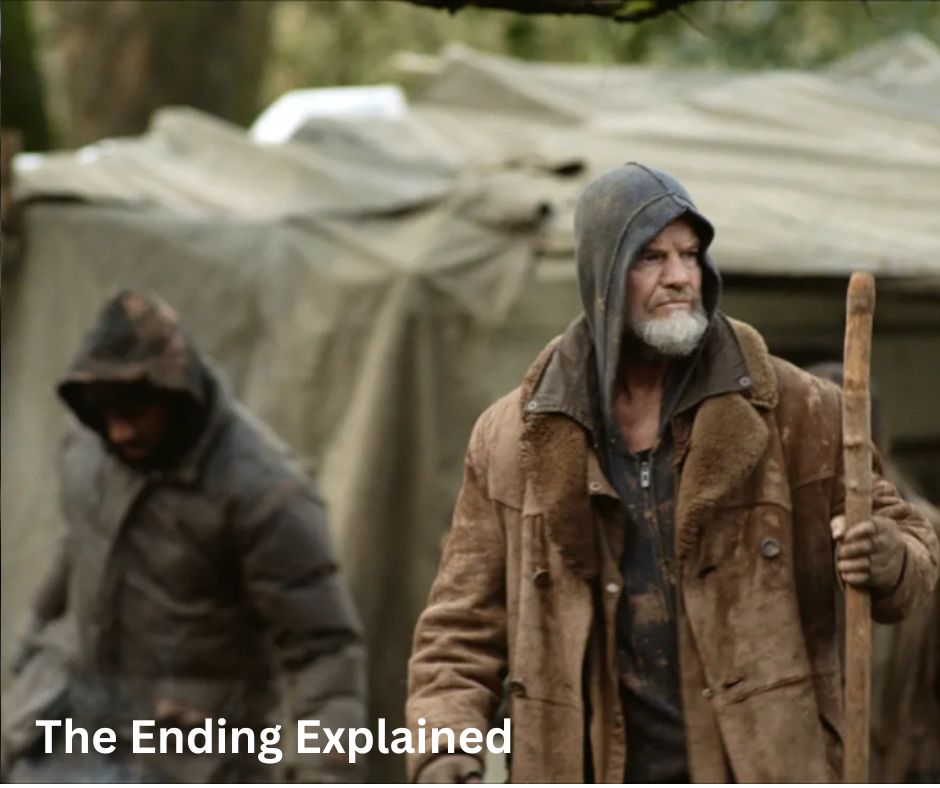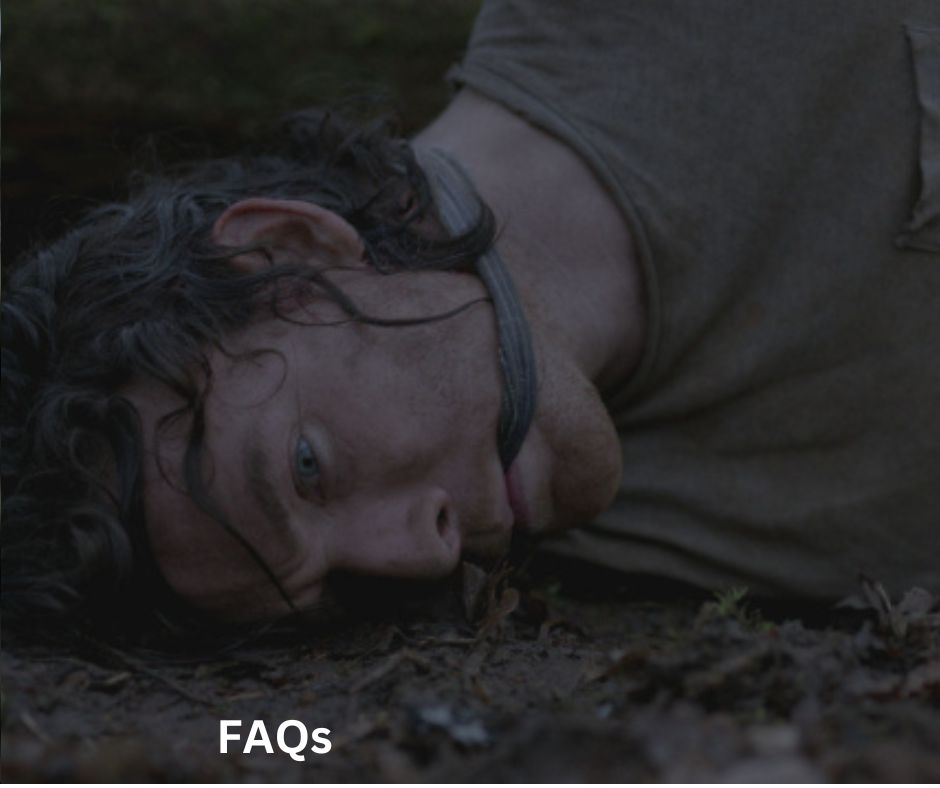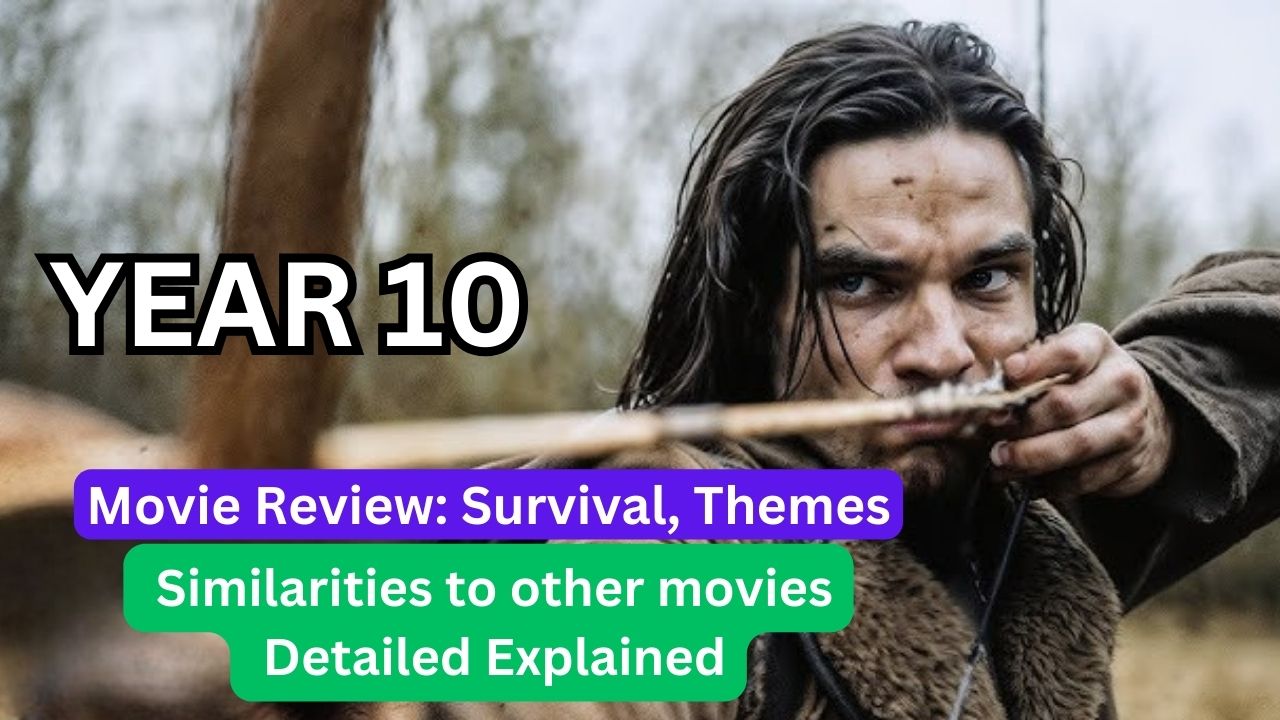Discover the gripping story of survival, revenge, and hope in the post-apocalyptic world of Year 10. Dive into the analysis, and let’s discuss!
Themes of Resilience and Humanity in the Movie Year 10, Similarities Between Year 10 and Classic & Modern Dystopian Movies
Introduction
The movie Year 10 is an intense and emotionally gripping tale of survival, loss, and revenge. Directed and written by Ben Goodger, this film immerses viewers in a post-apocalyptic world where civilization has crumbled, leaving behind a harsh and unforgiving environment. At its core, the story revolves around John, a man pushed to his limits as he battles a group of cannibals to save his wife and avenge his father. Released in 2024, Year 10 delivers a raw and visceral cinematic experience, leaving audiences both captivated and shaken by its portrayal of human resilience and the darkness that emerges in desperate times.
Set against a desolate jungle backdrop, the movie’s tone is grim and gritty, showcasing the lengths to which one man will go to protect his loved ones. The film masterfully combines suspense, drama, and action, keeping viewers on the edge of their seats from start to finish. The narrative dives deep into themes of survival, morality, and the unyielding bond of family, making it more than just an action-packed thriller. It’s a haunting exploration of humanity’s capacity for both brutality and compassion.
In this review, we’ll delve into every aspect of Year 10, from its plot and character dynamics to its critical reception and underlying messages. Whether you’re a fan of survival dramas or looking for a thought-provoking action movie, Year 10 offers a powerful cinematic journey you won’t want to miss.
Plot Summary
Set in a post-apocalyptic world, the movie delves into a grim and haunting survival story, where hope clashes with despair at every turn. John, the protagonist, lives with his father and his ailing wife in a secluded jungle. Their fragile peace shatters when a group of cannibalistic enemies attacks, forcing the family into a desperate flight for survival. As the attackers close in, John’s father sacrifices himself, fighting valiantly to protect his son and daughter-in-law. Tragically, he is overpowered and killed, his body desecrated and taken by the ruthless invaders.
Hiding in a pit to escape, John and his wife are left devastated, grieving the loss of the father figure and their stolen medicine — the only thing keeping his wife’s infection at bay. Determined not to succumb to despair, John embarks on a perilous journey to retrieve the stolen bag and secure their survival. Armed with little more than his wits and sheer will, he navigates through chilling obstacles: braving harsh winter conditions, avoiding wild dogs, and scavenging for resources while grappling with his weakening body.
The turning point comes when John discovers the enemies’ hideout. Driven by rage and a thirst for justice, he confronts the cannibals, managing to reclaim the medicine after a series of intense encounters, including a brutal fight with one of the enemy women. However, his victory is short-lived as the enemies pursue him, leading to a suspense-filled escape and a climactic battle with their leader.
In a gripping finale, John uses his ingenuity to outwit the cannibals and lure wild dogs to turn against the enemy leader. Ultimately, John returns home to find his wife miraculously alive, culminating in a poignant reunion. The movie ends on a bittersweet note, celebrating survival against all odds while underscoring the costs of resilience in an unforgiving world.
Character Dynamics
With a talented cast featuring Alexander Anderson as the determined protagonist John, the film’s performances elevate its gripping storyline. Supported by actors such as Duncan Lacroix as the brave father and Jessica Zerlina Leafe as the ruthless huntress, the ensemble breathes life into a story that is as poignant as it is thrilling. The cinematography captures the eerie beauty of the jungle while highlighting the bleakness of John’s struggle, making Year 10 not just a movie but an experience that lingers long after the credits roll.
The movie thrives on its intense character dynamics, presenting a gritty yet deeply human story of survival and sacrifice. At the center is John, a determined and resourceful protagonist whose evolution from despair to resolve forms the heart of the narrative. His courage in the face of overwhelming odds and his unwavering love for his wife drive him to embark on a perilous journey to reclaim stolen medicine, symbolizing hope in a bleak world.
John’s father is a pillar of strength and sacrifice, embodying the protective instinct of a parent. His ultimate act of bravery—facing the marauding cannibals alone—sets the stage for John’s fight for survival. The emotional weight of his death reverberates throughout the movie, pushing John to confront his fears and anger.
John’s wife adds another layer to the story. Fragile yet resilient, her condition serves as the motivation behind John’s perilous quest. Despite her illness, she demonstrates courage and resourcefulness, ultimately surviving against the odds.
The enemies, led by their cold and ruthless leader, are a chilling portrayal of humanity’s descent into savagery when stripped of societal norms. Their cannibalistic tendencies and brutal actions contrast sharply with John’s determination to cling to his morality, setting up an intense conflict of survival.

Full Movie Explanation
The movie unravels in gripping detail, drawing the audience into its harsh, post-apocalyptic world. Each segment builds tension, highlighting the stakes of survival while delivering emotional and action-packed moments.
The Opening: A Family Torn Apart
The story begins with John living in a secluded jungle with his ailing wife and his father. The calm is abruptly shattered when a group of enemies—cannibalistic marauders—descends upon their home. The attackers, vicious and relentless, force the family into an immediate fight-or-flight response. John and his father gather what little they can and attempt to flee, but John’s wife’s poor health limits their options.
In a heart-wrenching sequence, John’s father sacrifices himself, staying behind to fight the invaders to give John and his wife a chance to escape. Although he manages to kill a few attackers, he is ultimately overpowered and gruesomely killed. His death serves as a catalyst for the story, plunging John into a state of grief and a thirst for revenge.
John’s Struggle for Survival
After witnessing his father’s death and losing the crucial medicine for his wife to the attackers, John embarks on a desperate journey to reclaim it. The film captures his harrowing struggles as he faces extreme cold, hunger, and physical weakness. Each step is a test of endurance, with the barren landscape serving as both a physical and emotional reflection of John’s state.
In one key scene, John encounters an old man and a child, whom he scares into handing over warm clothing. This moment reveals John’s moral conflict—he is forced to abandon his usual principles in the face of dire necessity.
The Enemy Camp: Discovery and Confrontation
Tracking the enemies to their camp, John discovers the horrifying truth—they have not only stolen the medicine but also desecrated his father’s body. This realization ignites a deep fury, pushing him to infiltrate their camp.
John uses his ingenuity to navigate traps and surveillance, eventually finding his wife’s medicine in a locked box. However, his presence is discovered when he engages in a brutal fight with a female enemy. Despite his weakened state, John prevails, killing her and hiding the evidence of their struggle. The tension heightens as John narrowly avoids being caught by the returning marauders.
The Pursuit: Survival Instincts Tested
John’s escape from the camp is fraught with danger. The enemies discover his intrusion and begin hunting him relentlessly. Weak and injured, John faces not just the enemies but also wild dogs prowling the area. In a nail-biting sequence, he uses fire to fend off the dogs and a whistle to redirect their attention toward the marauders.
The movie masterfully balances action and suspense, showing John outwitting his pursuers while grappling with his physical and emotional limits. His fight with the enemy leader becomes a symbolic battle—justice for his father and a test of his humanity.
The Climax: Revenge and Resolution
In the climactic showdown, John and the enemy leader face off in a brutal and primal battle. After a series of intense blows, John finally overcomes his adversary, delivering poetic justice as the leader succumbs to wild dogs.
John’s victory is bittersweet. He retrieves the medicine but returns home to find his wife missing. In a deeply emotional moment, he assumes the worst, only to be reunited with her in a powerful scene that underscores the strength of their bond. Their survival against overwhelming odds serves as a testament to resilience and love.
The movie concludes with John and his wife starting anew, carrying the scars of their ordeal but also the hope of rebuilding their lives. It’s a harrowing tale of survival, sacrifice, and the unyielding human spirit.

The Ending Explained
The movie’s ending delivers a harrowing yet emotional resolution to John’s relentless fight for survival. After defeating the cannibalistic group and retrieving the vital medicine for his wife, John is confronted by one final, devastating obstacle. He returns home to find the door open and his wife missing, her fragile condition leaving her fate uncertain. This moment symbolizes John’s worst fear—he may have failed to save her despite his sacrifices.
Heartbroken and overwhelmed, John collapses, seemingly defeated. However, the narrative takes a hopeful turn when his wife emerges from the shadows, alive. Despite her injuries and weakened state, she has managed to endure, showcasing her quiet strength and will to survive. Their tearful reunion signifies a moment of catharsis, blending relief and joy after the harrowing events they’ve endured.
The final scenes emphasize resilience and love, suggesting that even in a world ravaged by chaos and brutality, humanity’s core virtues persist. John’s journey, marked by loss and unimaginable hardship, culminates in a bittersweet triumph, as he and his wife look ahead to a future filled with uncertainty but bound by their shared survival. This poignant conclusion leaves viewers reflecting on the costs and rewards of perseverance.
Themes and Analysis
The movie is a powerful exploration of survival, sacrifice, and the resilience of the human spirit in the face of insurmountable odds. At its core, the story examines what it means to hold on to hope in a world stripped of morality, where survival often demands the unthinkable.
One of the central themes is family and sacrifice. John’s father embodies selflessness, sacrificing his life to give his son and daughter-in-law a chance to escape. This act reverberates throughout the narrative, shaping John’s resolve and serving as a poignant reminder of the lengths to which one will go for loved ones.
Survival and morality emerge as another critical theme. John is pushed to his limits, forced to make morally ambiguous choices, such as intimidating an old man and child to secure warm clothing. His actions reflect the harsh realities of survival, questioning whether humanity can remain intact when faced with life-and-death situations.

The dehumanization of violence is starkly portrayed through the cannibalistic enemies, who serve as a chilling representation of humanity’s descent into savagery. Yet, even amidst this brutality, John’s character clings to his humanity, driven not by vengeance alone but by the need to protect his wife.
Finally, the movie underscores the power of hope and love. The bond between John and his wife is a beacon of light in the grim narrative. Despite their suffering, their reunion in the end symbolizes resilience and the triumph of love over despair.
Through its intense storytelling and layered themes, the film offers an unflinching look at human nature under duress, leaving viewers with a mix of emotions—grief, anger, and ultimately, hope. It’s a raw and reflective narrative that lingers long after the credits roll. WATCH NOW The Full movie.
Similarities Between Year 10 and Classic & Modern Dystopian Movies
The movie Year 10 finds its narrative roots in the dystopian genre, drawing clear parallels to both classic and modern films that explore themes of survival, morality, and humanity’s resilience in the face of collapse.
Similar to The Road (2009), Year 10 is grounded in an intimate portrayal of survival within a brutal, post-apocalyptic landscape. Both films revolve around a father figure sacrificing everything to protect their family amidst unrelenting dangers, highlighting the enduring bond of love even in humanity’s darkest hours. The sparse, haunting environments in both movies serve as metaphors for the desolation within their characters’ psyches.
The cannibalistic antagonists in Year 10 echo the terrifying savagery portrayed in Mad Max: Fury Road (2015), where survival instincts often drive humanity to barbaric extremes. Like the titular character in Year 10, protagonists in dystopian films often face morally gray decisions while clinging to their humanity—a common thread seen in modern dystopian works such as A Quiet Place (2018) and Bird Box (2018).
Themes of sacrifice and the struggle to retain morality under desperate circumstances also align Year 10 with classics like Children of Men (2006). The focus on protecting the vulnerable (in this case, John’s ailing wife) resonates deeply with the story arcs of these films.
Finally, Year 10 shares a raw, personal storytelling style with I Am Legend (2007), centering on an individual’s quest for survival and redemption in a world dominated by despair. The commonality lies in their exploration of hope—fragile yet persistent—as a guiding force amidst chaos.
Year 10 stands as both an homage to and a reimagining of the dystopian genre, drawing inspiration from its predecessors while delivering a deeply emotional and unique survival story.

FAQs about the movie Year 10
1. What is the movie Year 10 about?
Year 10 is a post-apocalyptic survival thriller. It follows John, a young man who must face a group of cannibals that have murdered his father and stolen the medicine crucial for his wife’s survival.
2. Who directed and wrote Year 10?
The movie was directed and written by Ben Goodger.
3. Who are the main cast members in Year 10?
Key cast members include:
- Alexander Anderson as Charger (John)
- Emma Cole as Lover (John’s wife)
- Duncan Lacroix as Father
- Luke Massy as Leader
4. What is the central theme of the movie?
The movie explores themes of survival, vengeance, sacrifice, and humanity’s resilience amidst extreme adversity.
5. What is the pivotal moment in the movie?
One key moment is when John retrieves the stolen medicine from the enemy camp while overcoming numerous obstacles, including wild dogs and dangerous enemies.
6. How does the movie Year 10 end?
The movie concludes with John avenging his father’s death, defeating the cannibals, and successfully retrieving the medicine. Despite thinking his wife was lost, they reunite in the final moments, bringing a bittersweet yet hopeful end to the story.
7. Who are the villains in the story?
The primary antagonists are a group of cannibals who not only murder John’s father but also threaten John and his wife’s survival.
8. What kind of challenges does John face in the movie?
John faces multiple challenges, including:
- Cannibalistic enemies
- Freezing winter conditions
- Wild dogs
- Limited resources like food, water, and warm clothing
9. What is the significance of the title Year 10?
The title likely refers to a timeline set 10 years after a catastrophic event that decimated civilization, leaving survivors in a desperate struggle for survival.
10. Is Year 10 based on a true story?
No, Year 10 is a fictional narrative and does not claim to be based on real events.
11. What genre does the movie belong to?
Year 10 is a survival thriller with elements of action and drama.
12. Are there any unique production details?
The film features intense fight choreography led by Raph Aldis, a desolate setting designed by Theo Boswell, and an immersive soundscape crafted by Dave Calvert and Colin Chapman.
13. Is the movie suitable for all audiences?
The movie contains intense violence, themes of cannibalism, and survival-related drama, making it more suitable for mature audiences.
14. What makes John’s character compelling?
John’s determination, resourcefulness, and emotional depth make him a compelling protagonist. Despite immense hardships, his love for his wife and desire to honor his father’s memory drive his actions.
15. Does Year 10 hint at a sequel?
While the story concludes with a sense of closure, the vast post-apocalyptic setting leaves room for potential sequels exploring new challenges or characters.
Conclusion
The movie Year 10 is an intense journey of survival, loss, and resilience. John’s determination to protect his loved ones and seek justice against overwhelming odds makes it a gripping story. It leaves viewers questioning how far one can go for family and love in a world stripped of morality.
We want to hear your thoughts! What did you think of John’s journey? Which moment stood out to you the most? Share your opinions in the comments below—we’d love to discuss this epic survival tale with you!
If you’d like to watch the full movie, you can click on this link: Watch the Full Movie.
For our Bengali viewers: We have a full movie explanation in Bangla just for you! If you’re interested, check it out on our YouTube channel, Joymahidul. Watch and enjoy the detailed explanation of Year 10 in your language!
Year 10 (2024) Reviews:
Rotten Tomatoes
“Year 10” has received mixed to negative reviews from critics and audiences. On IMDb, user reviews highlight the film’s lack of dialogue and average storyline, with one reviewer rating it 5 out of 10, stating it’s “okay to watch” but lacks “great or exciting scenes.”
IMDb Another user rated it 2 out of 10, criticizing plot holes and character decisions, describing it as “deliberate writing to not make sense.” On Letterboxd, a reviewer rated it 2.5 out of 5, noting that while the film does some things right considering its low budget, it doesn’t match the quality of similar films like “The Road” or “The Survivalist.”
Letterboxd Overall, the film has been described as underwhelming, with critiques focusing on its lack of dialogue, average storyline, and failure to fully realize its potential.
For more insightful movie analyses and reviews, visit joymahidul.com Joymahidul – Movie analysis FAQs, Cinematic Connections and Story.
